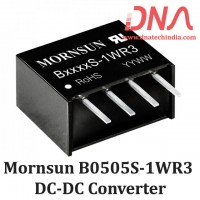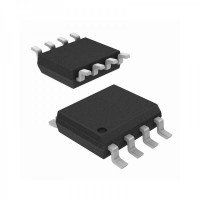RFID BASED ATTENDANCE SYSTEM |
||||||
Background |
||||||
|
In all aspects of our life, we encounter event recording applications very often. Recording of any entity be it sound, pictures, events etc. is very useful as it enables us to manipulate data to our requirements. One can exploit the full potential of the recorded information for specific user defined purposes. Keeping in mind the significance of event recorders in today’s world, we arrived at a common decision of making ATTENDANCE RECORDING SYSTEM USING RFID as our project in fulfillment of our B.E.(Electronics and Telecommunication) degree course. |
||||||
|
|
||||||
Function |
||||||
|
An attendance recording system’s basic function is to keep a record of the time at which the employees of a particular firm report to work and leave from work. It is one of the most widely used event recording application in the industry today. A track of employee attendance is a must for payroll generation. The traditional method of maintaining an attendance register makes the job very tedious and prone to human errors. The collection and processing of data of employee. |
||||||
|
Attendance which may include leaves, half working days, overtime etc. and using it to generate the payroll manually consumes important man hours, which in turn could be used to increase productivity and in turn profitably of the firm. In case of an error, even more time will be used to detect and rectify it, if the process is manual. The whole process will be simplified to great extent. |
||||||
|
If a system is available by means of which attendance data be stored, accessed, sorted, and processed and obtained in a form of a detailed report which may be used directly for payroll generation, hence saving a lot of precious time. It functions as a network of microchip “smart tags” and receivers. Each smart tag is embedded with a unique electronic product code (EPC) and a micro-antenna. Once assigned, the EPC becomes a DNA-like marker for the item, identifying it from every other item in the world. When a tagged item passes within range of a reader, the reader retrieves the EPC via radio waves, identifies the item and its exact location, and relays this real-time information to a central computer. Taken together, the series of transactions comprise a comprehensive record of the tagged item’s movement from point of origin to point of sale. |
||||||
|
|
||||||
Comparison |
||||||
|
Manufacturers of time/attendance recorders (T/A recorders) in Taiwan offer mechanical/electronic and computer-based units. Most manufacturers provide computer-based models and only a few offer mechanical/electronic recorders. Most T/A recorders in Taiwan fall within the midrange to high-end category. Computer-based models range in FOB price from Rs.10000 to Rs.15000, depending on the product's networking and access control features. Well,our product will be made at a cost of Rs.6000 (approx) and will include an onboard programmer. The person concerned will then be able to program the onboard microcontroller and will have access to the database. |
||||||
|
|
||||||
User |
||||||
|
The product can be used by many organizations like our college itself. Whereby the traditional system of signing in the musters will now be replaced and replaced well by using tags allotted to the staff. However the current user is a small California startup called InCom has developed a radio frequency identification (RFID) system called InClass to automate attendance-taking in elementary and secondary schools. The system uses ultra-high frequency (UHF) readers mounted in classroom doorways and passive RFID tags attached to student ID card holders. A unique 15-digit ID number is written to each tag and associated with the name of the student to whom it is issued. As the students pass through the reader-generated interrogation field under a doorway, the reader sends the tags' unique ID numbers to a central server. InCom has developed a software program, installed on the server, that collects the tag data and uploads a list of present, absent and tardy (based on when they enter the classroom) students to a PDA that is issued to the teacher. |
||||||
|
|
||||||
Block Diagram |
||||||
|
||||||
|
|
||||||
Explaination: |
||||||
Microcontroller: |
||||||
|
It is the Heart of the circuit. We will be using ATMEL’s AT89S52 microcontroller. The controller that we will be using is ATMEL’s AT 89s52, which is a 40 pin microcontroller with 32 I/O lines. The controller communicates with the RFID reader & the PC using RS232 protocol for which MAX 232 IC is required. |
||||||
|
|
||||||
MAX232: |
||||||
|
Microcontroller communicates with the PC using its inbuilt Serial Port. The voltage levels are 0 & 5 Volts, but for the controller to communicate with the PC we are using RS232 protocol so for converting the CMOS (0-5) voltage levels into RS232 (±12) voltage levels we will be using MAX 232. |
||||||
|
|
||||||
Keypad: |
||||||
|
The keypad is used to indicate if the person is entering or exiting the premise. So basically there will be two switches one for enter & one for exit. |
||||||
|
|
||||||
RTC: |
||||||
|
Real Time Clock (RTC) is used to storing the real time. A battery is provided to the RTC so that even when there is a power failure the time is intact. The controller communicates with the RTC using the I2C protocol. |
||||||
|
|
||||||
EEPROM: |
||||||
|
EEPROM is used to store the LOG’s of the person entering or exiting the premise. The EEPROM will contain the person’s ID, time of scan & if the person is entering or exiting. The controller communicates with the EEPROM using the I2C Protocol. |
||||||
|
|
||||||
LCD: |
||||||
|
We will be using 2-Line, 16 characters LCD. This will be used to display the real time, scan successful or not and other such details. |
||||||
|
|
||||||
Power Supply: |
||||||
|
The complete circuit works on 5v this voltage is generated in the power supply section which basically consists of a step down transformer, a rectifier & a voltage regulator. |
||||||
|
|
||||||
|
The Advantages of RFID vs. barcode technology: |
||||||
|
No line of sight requirement. |
||||||
|
The tag can stand a harsh environment. |
||||||
|
Long read range. |
||||||
|
Portable database. |
||||||
|
Multiple tag read/write. |
||||||
|
Tracking people, items, and equipment in realtime. |
||||||
|
|
||||||
Advantages |
||||||
|
||||||
|
|
||||||
Disadvantges |
||||||
|
||||||
|
|
||||||
Applications |
||||||
|




